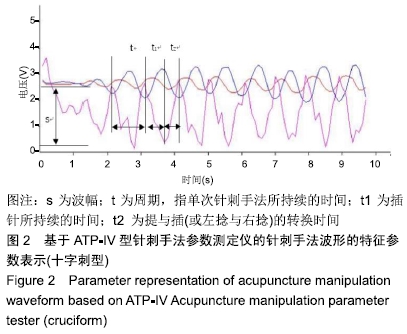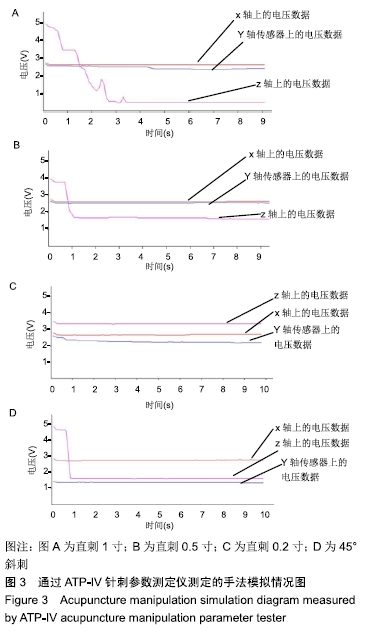中国组织工程研究 ›› 2020, Vol. 24 ›› Issue (11): 1745-1749.doi: 10.3969/j.issn.2095-4344.2567
• 组织构建临床实践 clinical practice in tissue construction • 上一篇 下一篇
基于虚拟现实技术构建蒙医针刺手法的上肢仿真系统
姬宇程,李忠贤,翁羽洁,宁鹏飞
- 内蒙古医科大学计算机信息学院,内蒙古自治区呼和浩特市 010110
Modeling of Mongolian acupuncture upper limb simulation system based on virtual reality techniques
Ji Yucheng, Li Zhongxian, Weng Yujie, Ning Pengfei
- School of Computer Information, Inner Mongolia Medical University, Hohhot 010110, Inner Mongolia Autonomous Region, China
摘要:

文题释义:
蒙医针刺仿真系统:立足于蒙医的8种针刺方法(直刺、斜刺、上刺、下刺、穿透剌,十字形刺、避开脏腑刺,避开要害刺)和6种针刺手法(单手针刺、双手嵌刺、双手抓刺、双手伸刺、双手捏刺,管针针刺),在针刺过程的数字化上相对中医针刺手法更为简单,但同样受到虚拟手术仿真系统关键技术,即虚拟软组织形变建模技术与力反馈技术的限制。
虚拟现实技术:是仿真技术与计算机图形学、人机接口技术、多媒体技术、传感技术、网络技术等多种技术的集合,其主要包括模拟环境、感知、自然技能和传感设备等方面。通过使用专业软件建立三维模型,模拟真实环境中的视觉情况,虚拟三维空间,把交互时人体所感受到的力觉信息融入其中,再通过专用设备与将虚拟环境中的有关信息反馈给用户,从而带给操作者类似于实际操作的临场感。
背景:蒙医针刺手法的训练是蒙医针灸理论联系实际的一个重要步骤。
目的:在虚拟环境中,建立表达不同上肢穴位蒙医针刺手法涉及的力学模型,以多层次展示蒙医上肢针灸穴位的针刺过程。
方法:①由内蒙古医科大学蒙医药学院1名在职研究人员针对蒙医针刺疗法在前臂特定穴位的直刺法(垂直刺入皮肤)、斜刺法(倾斜45°刺入皮肤)、十字刺法(刺入皮肤后四方旋转)进行演示实验,使用ATP-IV型针刺信息采集系统的光学位置传感器和附带的记录软件,记录自行针开始10 s内的各个传感器数据;②扫描条件为电压9 V,电流250 mA,其余各项参数选择手法参数测定仪的默认值。将针刺手法参数测定仪的X、Y、Z轴采样信息分别绘制电压-时间关系图,参照文献记载建立针刺过程模型;③对蒙医针刺过程的建模进行生物力学分析;④研究方案的实施符合内蒙古医科大学的相关伦理要求。
结果与结论:①通过ATP-IV针刺参数测定仪实际测定的直刺、斜刺手法模拟参数,可见在针尖接触到软组织表面后针受到的轴向力会迅速上升,在刺破软组织表皮后急剧下降,形成了落空感,并在此后由于软组织弹性和摩擦力的作用,针受到的阻力趋于平缓,与Okamura的生物力学实验结果基本一致;②相对于中医复杂的针刺手法,蒙医文献载述的针刺手法只有与手感结合的进针三步法和与穴位结合的8种针刺手法,具有操作简便、用具简单的特点。
ORCID: 0000-0002-0730-4002(姬宇程)
中国组织工程研究杂志出版内容重点:组织构建;骨细胞;软骨细胞;细胞培养;成纤维细胞;血管内皮细胞;骨质疏松;组织工程
中图分类号:





